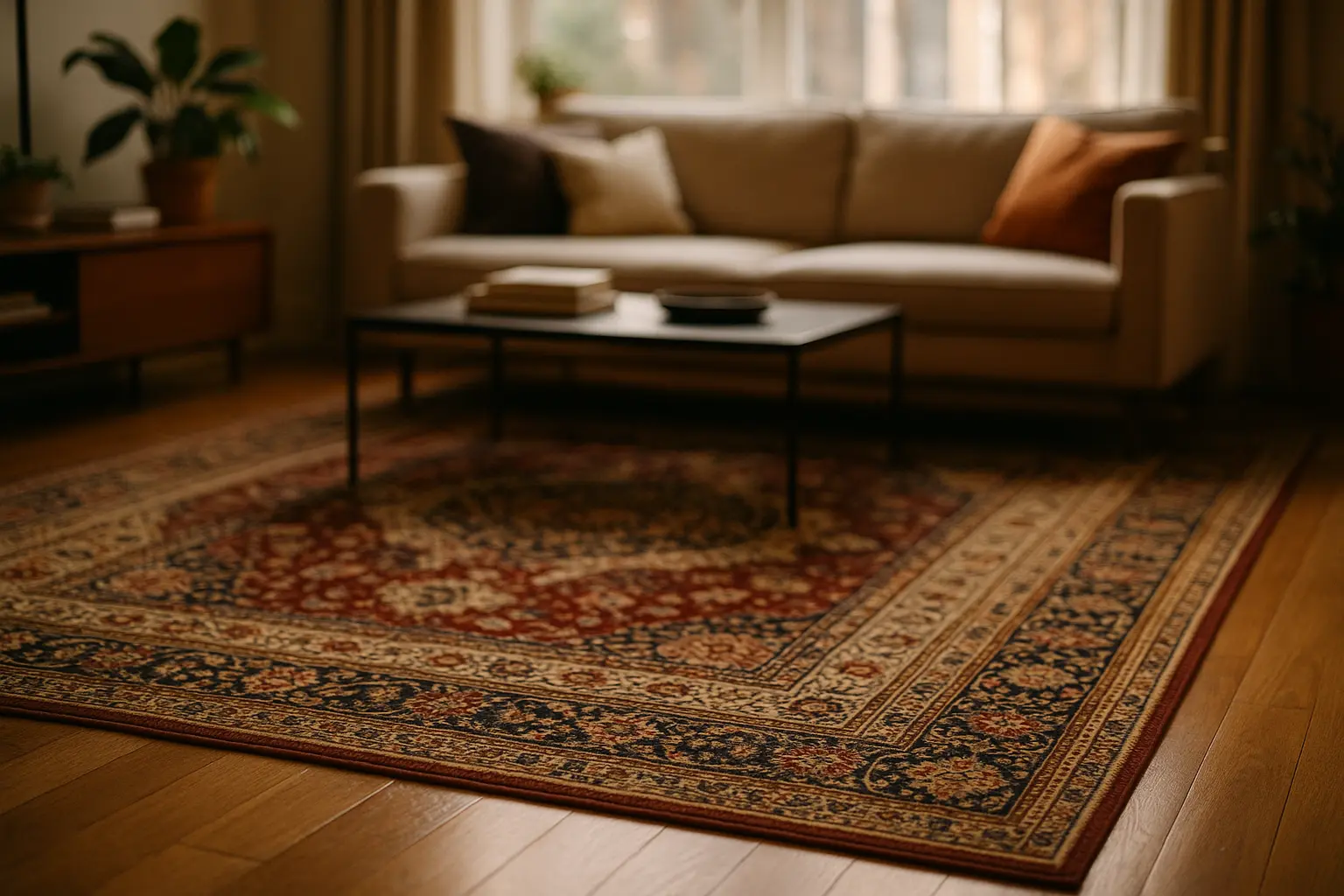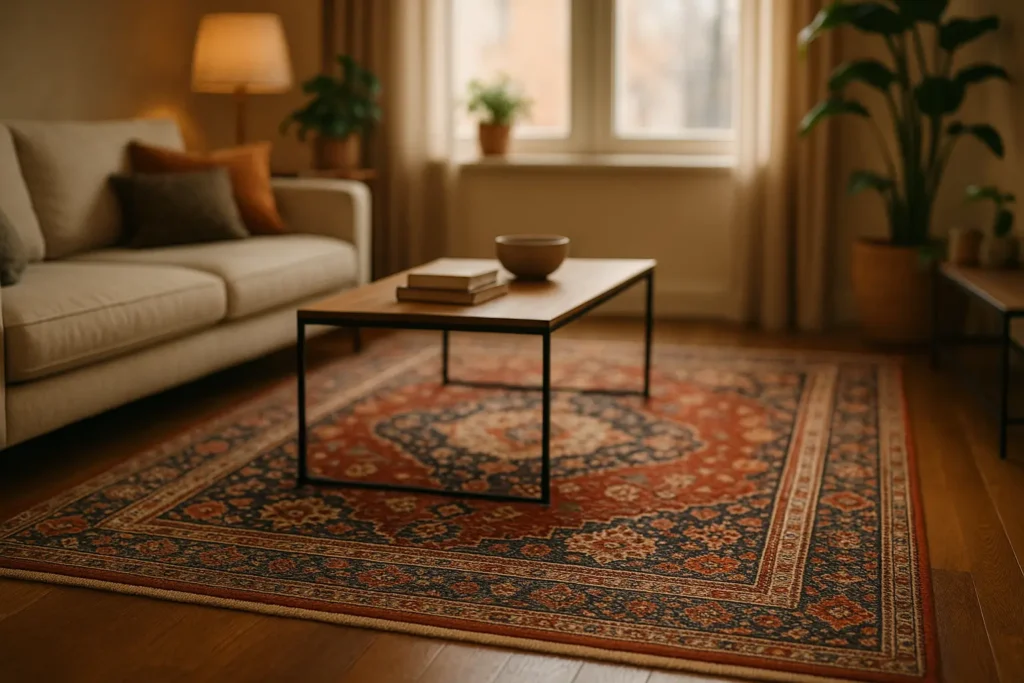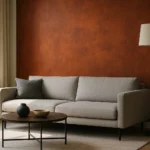In the realm of interior design, the seemingly humble rug holds an almost transformative power. When chosen thoughtfully, a rug can elevate a room’s aesthetic, harmonizing disparate elements and creating a unified look. But how do we navigate the endless choices, colors, materials, and sizes? That’s precisely what we’re here to explore. As we journey through the nuances of selecting the perfect rug, we’ll unravel the secrets to attaining that elusive balance between style and functionality. Our guide will ensure your chosen rug is more than just a decorative asset; it becomes a cherished piece of your living space.
Understanding the Role of Rugs in Room Design
Rugs are often the unsung heroes of interior design. They anchor a room, define spaces, and even absorb sound, enhancing the overall ambiance. By adding a rug, we can delineate areas in open-plan spaces or add a splash of color and texture to an otherwise neutral palette.
The Impact of Size
Choosing the right size is paramount. A too-small rug will look lost, while a too-large one can overwhelm a space:
- Living Areas: A rug should ideally sit under the front legs of your furniture, creating an inviting island of comfort.
- Dining Rooms: The rule of thumb is that it extends at least 24 inches beyond the table, allowing chairs to sit comfortably on the rug even when pulled out.
- Bedrooms: Opt for a large rug placed under the bed, extending beyond the sides, to add warmth and texture.
Creating Harmony with Furniture
Rugs have the power to tie your furniture and decor together. When selecting a rug, consider its relationship with your existing pieces:
- Color Palette: Reflect your room’s existing hues, or use a rug to introduce new shades.
- Pattern Play: If your space is already busy, a solid-colored rug can provide balance. Conversely, a bold pattern can enliven a minimalist layout.
Exploring Material Options for Rugs
The material of a rug not only dictates its look and feel but also its durability and ease of care. From wool rugs to synthetic options, each brings its own set of advantages.
Embracing the Natural Elegance of Wool
Wool remains a popular choice for high-traffic areas due to its durability and resistance to dirt and stains:
- Texture and Comfort: Wool is luxurious underfoot, offering softness and warmth.
- Longevity: With proper care, wool rugs can last for decades, maintaining their appearance and integrity.
Synthetic Materials: Practical and Affordable
Synthetic fibers like nylon and polyester present budget-friendly alternatives, particularly for families or pet owners:
- Stain Resistance: Many synthetics boast built-in stain-fighting properties.
- Versatility: Available in a variety of colors and styles, they adapt well to different design needs.
Outdoor and Specialty Rugs
For outdoor spaces, selecting durable materials that withstand weather conditions is crucial:
- Outdoor Rugs: Typically crafted from polypropylene, these rugs resist fading, mold, and mildew.
- Kitchen and Bathroom Rugs: Look for materials that offer excellent water resistance and easy cleaning.

Navigating Color and Pattern Choices
Color and pattern are powerful tools in our design arsenal. By strategically utilizing these elements, we can create a cohesive and stylish environment.
Playing with Color
Color can set the mood and tone of a room:
- Neutral Tones: These offer versatility, allowing you to easily switch out other elements as trends change.
- Vibrant Hues: Bold colors can energize a room, acting as a focal point and drawing attention.
Pattern Dynamics
Patterns can bring depth and personality, but should be chosen with care:
- Subtle Patterns: Best for spaces with already bold decor elements.
- Bold Patterns: Perfect for adding intrigue to a simple space.
Harmonizing with Walls and Decor
Ensure your rug complements rather than competes:
- Wall Colors: Contrast or complement with your walls for a balanced visual impact.
- Artwork and Accessories: Let these guide your choice of rug pattern and color, creating a unified design narrative.
Maintaining and Caring for Your Rug
Once you’ve chosen the perfect rug, maintaining its beauty and longevity becomes the next important step. Even the most durable rugs require care and attention to retain their charm.
Routine Cleaning and Care
Regular maintenance is key:
- Vacuum Regularly: This prevents dirt from settling into the fibers, preserving the rug’s appearance.
- Spot Clean Spills: Act quickly with gentle cleaners to avoid permanent stains.
Professional Cleaning
Most rugs benefit from occasional professional cleaning to keep them looking their best:
- Deep Cleans: This removes embedded dirt and restores the rug’s vibrancy.
- Pile Protection: Ensures the rug maintains its texture and structural integrity.
Preventing Wear and Tear
Simple measures can keep your rug looking fresh:
- Rotate Regularly: This prevents uneven wear, especially in high-traffic areas.
- Use Pads: These extend a rug’s life by providing cushioning and preventing slipping.
Choosing the perfect rug is an art that transforms any space into a harmonious blend of style and functionality. As we’ve explored, selecting the right size, material, color, and pattern are integral to achieving the desired aesthetic. With a well-chosen rug, not only do we elevate our design, but we also create a welcoming environment that reflects our personal taste and enhances our living spaces. As we lay down our rugs, we invite warmth and elegance into our homes, setting the stage for countless memories. Let’s embark on this creative journey with confidence, armed with the knowledge to make our floors the foundation of our design dreams.
FAQ
What are the key factors to consider when selecting a rug for a specific room?
When choosing a rug, consider the room’s purpose, existing color scheme, and furniture layout. Additionally, think about foot traffic, as high-traffic areas may require more durable materials. The rug’s size should complement the room’s dimensions, and its texture should align with the room’s style.
How do I determine the right size of rug for my living room?
Measure the seating area and ensure that all furniture legs are either on or off the rug for a cohesive look. A common rule is to leave about 18 inches of bare floor around the rug’s edges. If the room is large, consider using multiple rugs to define different areas.
What materials are best suited for high-traffic areas like hallways or entryways?
For high-traffic areas, opt for durable materials such as wool, nylon, or polypropylene. These materials are known for their resilience and ability to withstand frequent use. Additionally, they are often easier to clean and maintain, making them ideal for busy spaces.
How can I ensure my rug complements the existing color scheme of a room?
Choose a rug that either matches or contrasts with your room’s color palette. For a harmonious look, select a rug that includes one or more colors from your décor. If you want the rug to stand out, opt for a bold pattern or color that contrasts with the room’s dominant hues.
What role does texture play in selecting a rug?
Texture adds depth and dimension to a room. A thick, plush rug can create a cozy atmosphere, while a flat-weave rug offers a sleek, modern look. Consider the room’s overall design and the level of comfort you desire. Mixing textures in a room can also add visual interest.



